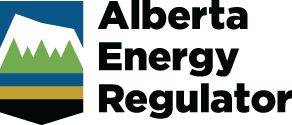The AER’s first resident elder helps Indigenous and non-Indigenous Albertans connect
We acknowledge that Alberta rests within the traditional territory of many First Nations and Métis peoples who have cared for these lands for centuries. As an act of reconciliation, we acknowledge those who came before us and express gratitude for sharing these lands with us today.
More than 200,000 Albertans self-identify as First Nations, Métis, or Inuit making our province home to the third largest Indigenous population in Canada.
As the result of our complicated history, there are times when Indigenous and non-Indigenous people are challenged to effectively communicate with one another, simply because they don't fully understand each other's background and worldviews. Here's where Doreen Healy, the Alberta Energy Regulator's (AER) first-ever resident elder, steps in to offer support by providing advice and guidance to help people work together and find common ground.
“My role is to help implement the Voices of Understanding process by identifying parallels between the western worldview and Indigenous worldview, and to develop an ethical, safe place to come together as equals.”
- Doreen Healy, resident elder
Healy, a member of the Kainai First Nation, initially started working for the Energy and Utilities Board (predecessor of the AER) in 2000 as a member of the public safety and sour gas advisory committee. Soon after, Healy identified the need to start building important relationships with Indigenous and Métis communities and established the regulator's first Indigenous relations team. The objective was to foster connections within individual Indigenous communities and Métis settlements that the AER works with to establish relationships built on trust and respect. After a few years away, in 2015, she was asked to come back to the AER and, in 2020, took on the new role of resident elder.
 "I have spent decades working with First Nations, the provincial and federal governments, and industry. My role at the AER is to ensure that we work with Indigenous communities in an effective manner," says Healy. "I maintain strong working relationships with Indigenous communities and with AER staff that are based on trust, respect, and understanding."
"I have spent decades working with First Nations, the provincial and federal governments, and industry. My role at the AER is to ensure that we work with Indigenous communities in an effective manner," says Healy. "I maintain strong working relationships with Indigenous communities and with AER staff that are based on trust, respect, and understanding."
Teachings from the past
Indigenous cultures view elders as people who have attained a high level of understanding of First Nation, Métis, or Inuit history, tradition, ceremonies, and healing practices. Elders are highly respected guardians and keepers of tradition and culture and are central to any Indigenous learning space. Elders are deeply committed to provide guidance, share knowledge, and teach others.
An important aspect of the resident elder role is to teach AER staff about the history of Indigenous people, and the fact that most, if not all, Indigenous communities are still processing the pain of the past. As a survivor of the residential school system, Healy shares first-hand experiences of her past through employee training sessions. Employees are often shocked by her stories because it's the first time they've been exposed to that kind of information.
"They don't even have an inkling about what happened. They apologize, and sometimes they are very angry that we were treated that way. But I want them to know we don't want them to be angry or sorry—it's already happened and in the past. All I ask is that people show compassion when dealing with Indigenous people and communities," says Healy.
Future focused
As the AER's resident elder, Healy's expertise and perspectives are sought on internal and external initiatives. Healy advises AER employees on Indigenous protocols and traditions, helps employees understand the interests and values communicated by Indigenous peoples, and helps project teams identify opportunities to engage with Indigenous communities. Healy is a trusted advisor in these conversations, usually participating in the dialogue and conducting a smudge and a prayer to establish an ethical, safe space for both Indigenous peoples and AER staff.
In 2017, the AER developed Voices of Understanding with Dr. Reg Crow Shoe, a Blackfoot elder, to explain Indigenous and western decision-making models and explore the ways they could be brought together. Voices of Understanding helps link western and Indigenous worldviews to find solutions that are mindful of cultural differences. In the Indigenous worldview, all people are equal, and decisions are made based on considerations of impact to people seven generations into the future.
"My role is to help implement the Voices of Understanding process by identifying parallels between the western worldview and Indigenous worldview, and to develop an ethical, safe place to come together as equals. That starts the process and with respect and trust, understanding will come," adds Healy. "My responsibility is to help with those teachings and hold the AER accountable in honouring the Bundle and considering the principles of Voices of Understanding."



